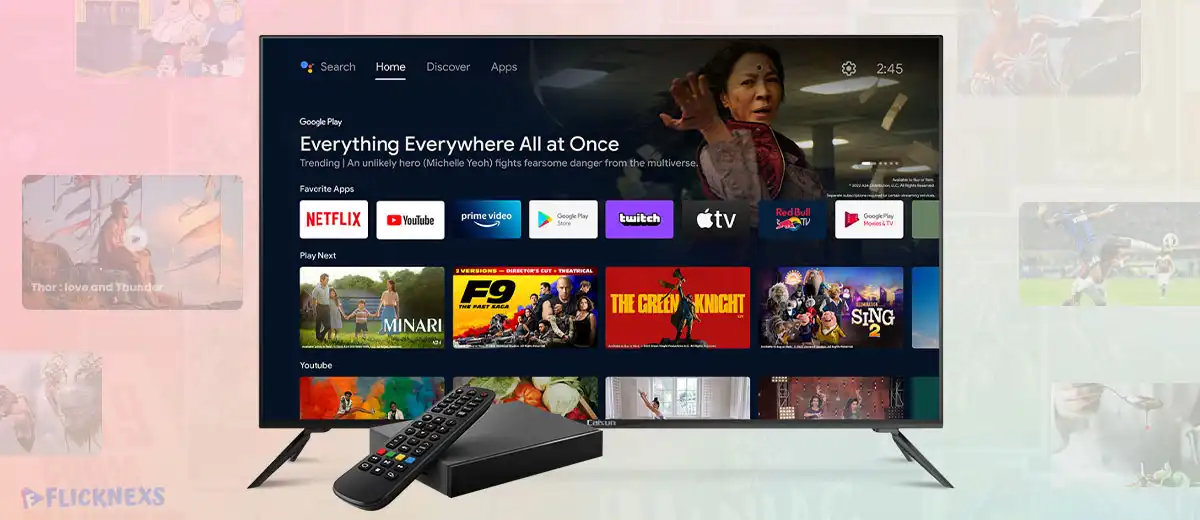Smart TVs are advanced televisions that offer more than just traditional viewing experiences. With built-in Internet connectivity, they provide access to a world of streaming services, online content and communication products. By connecting TV channels, smart TVs allow you to watch your favorite shows, movies and videos, download apps, browse the web, and even control other smart devices with home with their extensive capabilities and ease of integration into the interconnected world , and enjoy our home care experiences. This article explores ideas, benefits, feature of what a smart TV is.
What is Smart TV?
A smart TV is a television that connects to the internet and may hook up with lots of streaming platforms, presenting unlimited amusement options. If your TV has an internet connection, runs at the running device, and offers its very own app provider, it qualifies as a smart TV.
Smart TVs are much like smartphones in many ways because they circulate entertainment without delay for your TV through the net. Through internet connectivity and apps, it lets in you to enjoy the cutting-edge films, TV indicates, and sports activities immediately in your television, putting off the need for antennas, cables, or different transmission devices is removed. The combination of tv, net connectivity, and apps creates a smart TV revel in.
Difference between a smart TV and regular TV
| Features | Smart TV | Regular TV |
| Internet Connectivity | Built-in Wi-Fi or Ethernet | No internet connectivity |
| Operating System | Yes, runs on an OS (e.g., Android TV, webOS) | No operating system |
| App Support | App ecosystem for downloading and installing apps | No app support |
| Streaming and Online Content | Access to streaming platforms like Netflix, Hulu, YouTube, etc. | Limited to traditional broadcast methods (cable, satellite) |
| Interactivity and Smart Features | Voice control, gesture recognition, screen mirroring | No smart features |
| Smart Home Integration | Can integrate with other smart home devices for control and automation | No smart home integration |
| Software Updates | Receives software updates for performance improvements and new features | Basic firmware upgrades only |
| User Experience | Enhanced user interface, easy navigation, personalized recommendations | Standard user interface, limited functionality |
| Additional Devices | Can directly stream content without the need for external devices | Requires external devices (e.g., streaming devices, cable/satellite box) for streaming |
| Future-proofing | Capable of adapting to new technologies and services through updates | Limited adaptability to evolving technologies |
Read More: How To Start An Online Tv Channel Beginner Guide
How does It works?
Smart TVs are prepared with integrated Wi-Fi connectivity, enabling them to provide a diverse range of streaming offerings and content. You have the option to connect your clever TV to the internet both wirelessly or through an Ethernet cable. Opting for an Ethernet cable guarantees a more robust and stable net connection, while wi-fi connectivity permits flexibility in setting your TV everywhere inside your home without being restrained by cable length.
Upon powering for your internet-connected tv, it’s going to offer step-by-step instructions to help you within the initial setup technique. For surest performance while accessing online content, it’s far essential to have a reliable and high-velocity internet connection. A stronger connection significantly improves the first-rate of your viewing experience.
Connecting other smart devices to my smart TV, is it possible?
Yes, you can join your smart TV to different smart gadgets. Smart TVs regularly fit with diverse clever domestic devices consisting of smart lights, clever locks, and thermostats. This allows you to control and control a couple of smart gadgets out of your TV, creating a unbroken and interconnected clever home experience.
Read Also This: How OTT Technology Is Shaping The Future Of Entertainment
What are the features of a smart TV that make them the best?
Internet Connectivity: It offers built-in Wi-Fi or Ethernet connectivity, allowing access to streaming services, online content, and browsing the web.
App Support:
Smart TVs have an app ecosystem that enables downloading and installing various applications, such as streaming platforms, games, and utility apps, expanding entertainment and functionality options.
Voice Control:
Many smart TVs feature voice recognition technology, such as Amazon Alexa or Google Assistant, allowing users to control the TV, search for content, and manage other connected devices using voice commands.
Interactive Features:
It may include interactive features like gesture control, screen mirroring, and multi-device integration, enhancing the user experience and convenience.
Smart Home Integration:
Internet-connected televisions with integrated software can seamlessly integrate with other smart home devices, enabling centralized management of lights, thermostats, and more through the television interface.
Software Updates:
Smart TVs receive software updates, enhancing performance, adding new features, and ensuring compatibility with evolving technologies, keeping the TV up-to-date.
These features collectively make smart TVs versatile, convenient, and connected entertainment hubs for enjoying a wide range of content and accessing various smart home functionalities.
Does a smart TV require a cable box or broadband?
An internet-connected television does not necessarily require a cable box but does require broadband internet access. With built-in Wi-Fi or Ethernet connectivity, it can directly connect to the internet to access streaming services, online content, and other smart features.
However, if you want to watch traditional cable or satellite TV channels, you may need a separate cable box or a subscription to a cable/satellite service.
Explore More: 5 Simple Steps to Create Your Own OTT Platform
Conclusion
Smart TVs provide internet connectivity, advanced features, and a seamless viewing experience with streaming, app usage, and diverse entertainment options. They integrate with smart home devices, offer interactive features and voice control, and receive regular software updates to adapt to new technologies. They are essential in the modern connected home, transforming media consumption and device interaction.
Frequently Asked Questions
1. What is a smart TV?
It is a television that is equipped with internet connectivity and offers advanced features beyond traditional broadcast methods. It allows users to access streaming services, download and use applications, and interact with other smart devices.
2. How does a smart TV work?
Smart TVs connect to the internet via built-in Wi-Fi or Ethernet. They run on an operating system, allowing users to browse the web, stream content from popular platforms, download apps, and utilize interactive features such as voice control and screen mirroring.
3. What can I do with a smart TV?
With a smart TV, you can stream movies, TV shows, and videos from popular platforms like Netflix, Hulu, and YouTube. You can also access social media, play games, browse the internet, and control other smart home devices, creating a seamless entertainment and home automation experience.
4. Do I need a cable or satellite subscription for a smart TV?
No, it does not require a cable or satellite subscription. It can access content through internet-based streaming services. However, if you want to watch traditional cable or satellite channels, you may need a separate cable/satellite box or a subscription to a service that offers live TV streaming.
5. Can I use my smartphone with a smart TV?
Yes, you can often use your smartphone in conjunction with a smart TV. Many smart TVs have companion apps that allow you to control the TV, stream media from your phone to the TV, and even use your phone as a remote. Additionally, some smart TVs support casting or screen mirroring from your smartphone to the TV for easy content sharing.



Leave a Reply